Key Takeaways
- The Mycenaean Age showcased a sophisticated use of colors in clothing and decoration, emphasizing blues, golds, and earthy tones.
- Colors held symbolic meanings and were often used to denote status, wealth, and roles within society.
- Natural dyes derived from plants, minerals, and mollusks were primarily used to create vibrant colors.
- Gold was not just a color but a material, extensively used in jewelry, clothing embellishments, and ceremonial items.
- Clothing in the Mycenaean Age was not only functional but also a significant indicator of social hierarchy and cultural identity.
- The influence of the Mycenaean color palette and fashion extended beyond their civilization, impacting subsequent cultures in the Aegean and beyond.
- Techniques for dyeing and fabric creation were advanced, reflecting a deep understanding of natural resources and craftsmanship.
- The study of Mycenaean colors and fashion offers insights into the broader cultural and economic systems of the time.
Bronze Age Greece, particularly during the Mycenaean period, was a time of vibrant color and intricate artistry. The Mycenaeans, a civilization that thrived from around 1600 to 1100 BCE, were not only warriors and builders but also connoisseurs of elegance and beauty.
This article delves into the colors and fashions of the Mycenaean Age, exploring how hues of blue, gold, and other shades dominated their clothing and decorations, symbolizing their sophisticated society.
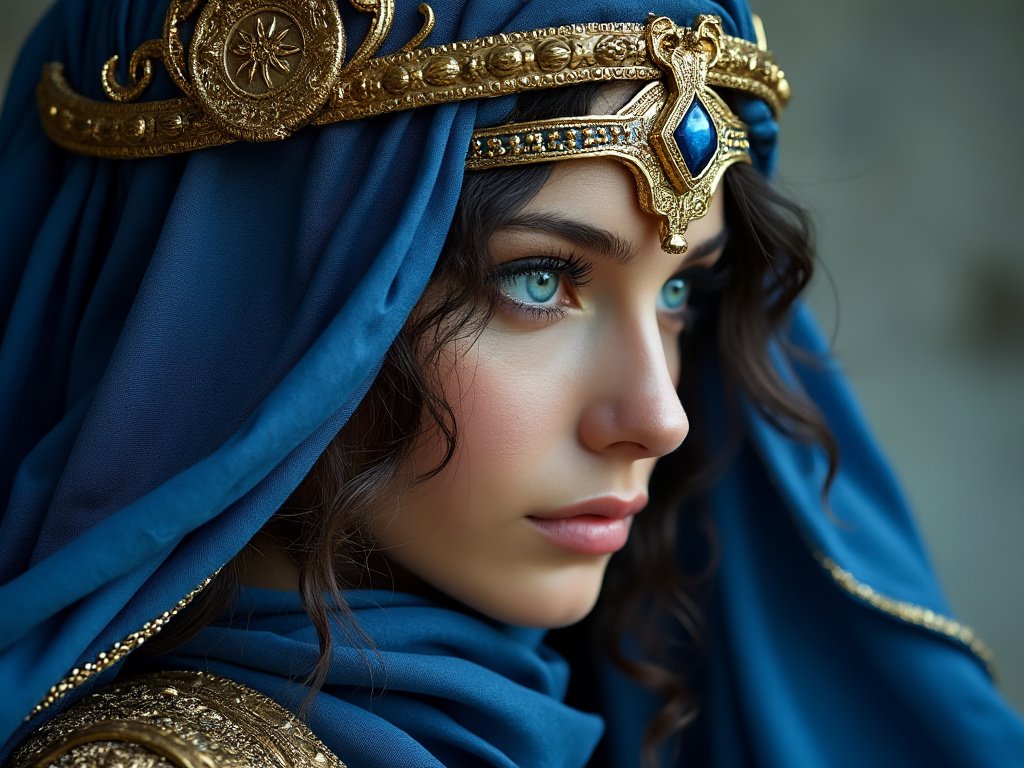
The Vibrancy of Mycenaean Colors
The Mycenaeans had a keen eye for color, and their use of blues, golds, and earthy tones was nothing short of artistic. Their color palette was not merely decorative but carried deep cultural and symbolic meanings.
The Allure of Blue
Blues were highly prized in Mycenaean fashion and decor. The most common source of blue dye was derived from the indigo plant and the more precious woad plant. These dyes produced rich, vibrant blues that adorned the garments of the elite. The color blue was often associated with the divine and the infinite, reflecting the Mycenaeans’ connection to the sea and the sky.
In Mycenaean frescoes, blue often depicted important figures and gods, suggesting its revered status. The process of creating blue dye was labor-intensive, involving fermentation and precise temperature control, indicating a high level of technological advancement.
The Golden Touch
Gold, synonymous with wealth and power, was extensively used by the Mycenaeans. Not only was it a color, but it was also a material that embellished their clothing and accessories. Gold leaf, beads, and threads were common in the garments of the aristocracy, symbolizing their elevated status.
The famous gold death masks, like the Mask of Agamemnon, are prime examples of the importance of gold in Mycenaean culture. These masks, found in royal tombs, highlight the role of gold in both life and death, indicating the deceased’s journey into the afterlife with wealth and honor.
Earthy Elegance
Earthy tones, derived from natural sources like ochre and clay, were prevalent in Mycenaean clothing and decor. These colors connected the Mycenaeans to the land and their agricultural roots. Browns, reds, and yellows were common, providing a warm and inviting aesthetic.
Natural dyes for these colors were easier to produce and more accessible than blues and purples, making them widespread among different social classes. However, the skill with which these dyes were applied reflected the artisans’ craftsmanship and the society’s appreciation for beauty.
Symbolism and Social Significance
Colors in Mycenaean fashion were more than aesthetic choices; they were potent symbols of social status, religious beliefs, and cultural identity.
Colors and Status
In Mycenaean society, the color and quality of one’s clothing could denote their social rank. The elite wore brightly colored garments with intricate patterns and gold embellishments, while the lower classes donned simpler, more muted attire.
This distinction was not just visual but also economic. The production of vibrant dyes was costly and labor-intensive, limiting their availability to the wealthier segments of society. Thus, a person’s clothing color was a direct reflection of their economic power and social standing.
Religious and Ceremonial Uses
Certain colors held religious significance and were reserved for ceremonial garments and rituals. For example, blue was often linked to the divine and used in the attire of priests and in the depiction of gods and goddesses.
Gold, with its eternal and unchanging nature, symbolized immortality and the divine. It was used extensively in religious artifacts, from idols to temple decorations. The use of specific colors in religious contexts reinforced their sacred meanings and the Mycenaeans’ devotion to their deities.
Cultural Identity
The Mycenaeans were part of a broader Aegean culture that included the Minoans and later influenced the Greeks. Their use of color in clothing and decoration helped define their cultural identity and distinguish them from neighboring civilizations.
This cultural identity was expressed through elaborate frescoes, pottery, and textiles, where color played a central role. The Mycenaeans’ distinctive color palette became a hallmark of their artistic legacy, influencing subsequent generations.

Techniques and Materials
The Mycenaeans employed advanced techniques and a variety of materials to achieve their rich color palette. Their methods of dyeing and fabric creation were sophisticated, reflecting a deep understanding of natural resources and chemistry.
Natural Dye Sources
Natural dyes were the primary source of color in Mycenaean textiles. Plants, minerals, and mollusks provided a wide range of hues. Indigo and woad produced blues, while madder root and saffron yielded reds and yellows.
The extraction and preparation of these dyes required specialized knowledge. For example, the indigo dyeing process involved fermenting the leaves of the plant and then oxidizing the extracted liquid to achieve the desired shade. This process was complex and time-consuming, highlighting the Mycenaeans’ dedication to their craft.
Fabric Dyeing Techniques
Dyeing techniques in the Mycenaean Age were diverse and sophisticated. Textiles were dyed using methods such as immersion, resist dyeing, and painting. Immersion dyeing involved soaking the fabric in dye baths, allowing the color to penetrate the fibers deeply.
Resist dyeing, where parts of the fabric were protected from dye to create patterns, demonstrated the Mycenaeans’ artistic ingenuity. This technique produced intricate designs and was often used in combination with embroidery and other embellishments.
Gold Embellishments
Gold was not only used in jewelry but also as an embellishment for clothing. Gold leaf and thread were woven into fabrics, creating luxurious garments that glittered in the light. This technique required skilled artisans who could manipulate the delicate gold material without damaging it.
The use of gold in clothing was both a display of wealth and a mark of craftsmanship. It indicated that the wearer was not only wealthy but also connected to the cultural and religious significance of gold.
The Influence of Mycenaean Fashion
The influence of Mycenaean fashion extended beyond their civilization, impacting subsequent cultures in the Aegean and beyond. Their use of color and decoration set a standard for elegance and sophistication.
The Legacy of Blue and Gold
The Mycenaeans’ use of blue and gold left a lasting legacy in the ancient world. These colors continued to be associated with divinity, royalty, and wealth in later Greek and Roman cultures. The techniques and materials developed by the Mycenaeans were passed down, influencing artistic traditions for centuries.
Cross-Cultural Exchange
Trade and interaction with neighboring cultures facilitated the exchange of fashion ideas and techniques. The Mycenaeans were part of a broader network of Aegean and Mediterranean civilizations, and their fashion reflected this interconnectedness.
Artifacts such as pottery and frescoes show similarities in style and technique between the Mycenaeans and their contemporaries. This exchange enriched Mycenaean fashion, incorporating elements from different cultures and creating a unique, hybrid style.
Impact on Greek Fashion
The Mycenaean influence on Greek fashion is evident in the continuity of certain styles and techniques. The use of natural dyes, gold embellishments, and intricate patterns persisted in Greek clothing, reflecting the enduring legacy of Mycenaean artistry.
Greek myths and literature also preserve the memory of Mycenaean fashion. References to the richly decorated garments of gods and heroes in Homeric epics echo the splendor of Mycenaean attire.

Understanding Mycenaean Clothing Through Archaeology
Archaeological discoveries have provided invaluable insights into Mycenaean clothing and fashion. These findings, including frescoes, pottery, and burial goods, offer a glimpse into the sartorial practices of this ancient civilization.
- Frescoes depicting clothing styles
- Pottery showing scenes of daily life
- Gold jewelry and embellishments
- Textile fragments with dye analysis
- Tools and equipment for textile production
- Burial goods indicating social status
- Trade records of dye and fabric materials
- Artistic depictions of mythological figures in clothing
- Examination of ancient dye vats and workshops
- Comparative studies with contemporary civilizations
The Role of Gender in Mycenaean Fashion
Fashion in the Mycenaean Age was influenced by gender roles and expectations. Clothing styles and colors often varied between men and women, reflecting their different roles in society.
Men’s Clothing
Men’s clothing in Mycenaean society was practical yet stylish. Tunics and kilts were common, often made from wool or linen. Colors were typically earthy, but elite men might wear garments dyed in blue or adorned with gold.
Men’s fashion also included accessories like belts, sandals, and jewelry. Warriors often had more elaborate clothing, reflecting their status and achievements in battle.
Women’s Clothing
Women’s clothing was more elaborate, with intricate patterns and a wider range of colors. Long dresses, known as peplos, were common
, often decorated with embroidery and gold embellishments.
Women’s fashion also included elaborate hairstyles and accessories like earrings, necklaces, and bracelets. These adornments highlighted their social status and personal wealth.
Children’s Clothing
Children’s clothing was simpler but followed the general styles of adult fashion. Boys and girls often wore tunics, and as they grew older, their clothing would become more elaborate, reflecting their approaching adulthood and social roles.
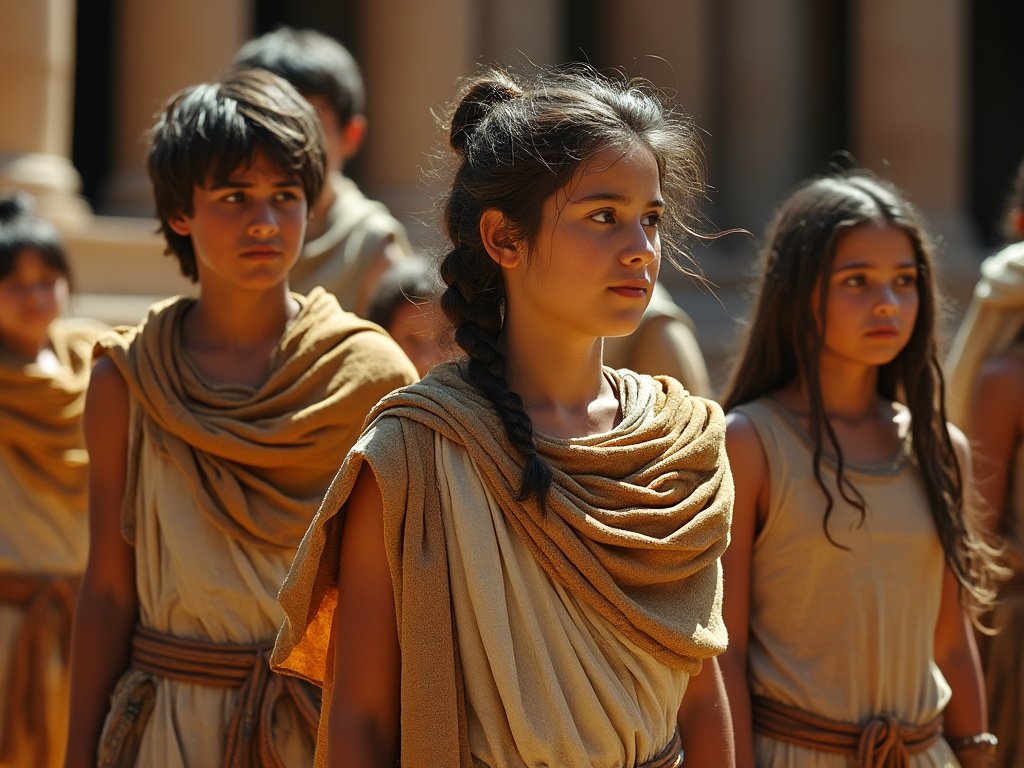
The Mycenaean Wardrobe: Daily Life and Special Occasions
The Mycenaean wardrobe was diverse, catering to daily life, religious ceremonies, and special occasions. Clothing was both practical and symbolic, reflecting the multifaceted nature of Mycenaean society.
Daily Attire
Daily attire in Mycenaean society was functional and comfortable. Tunics and kilts made from linen or wool were common, dyed in earthy tones. These garments allowed for ease of movement and were suitable for various activities, from farming to trading.
Ceremonial Garments
Ceremonial garments were more elaborate, often featuring rich colors and intricate designs. These clothes were worn during religious rituals, festivals, and other significant events. The use of blue and gold in these garments highlighted their sacred and prestigious nature.
Festive Fashion
Festive occasions called for vibrant and decorative clothing. Parties, weddings, and other celebrations saw Mycenaeans donning their finest attire, showcasing their wealth and status. Gold jewelry and brightly colored fabrics were common, adding to the festive atmosphere.
The Evolution of Mycenaean Fashion
Mycenaean fashion evolved over time, influenced by changes in society, technology, and interactions with other cultures. This evolution is evident in the archaeological record and provides insights into the dynamic nature of Mycenaean civilization.
Early Mycenaean Period
The early Mycenaean period saw the development of basic clothing styles and dyeing techniques. Natural dyes were used to create earthy tones, and simple patterns adorned the garments of the elite.
Middle Mycenaean Period
During the middle Mycenaean period, fashion became more elaborate. The introduction of blue and gold dyes marked a significant advancement, and clothing began to reflect the increased wealth and complexity of Mycenaean society.
Late Mycenaean Period
In the late Mycenaean period, fashion reached its peak of sophistication. The use of gold embellishments became more widespread, and clothing styles became more intricate. This period also saw greater influence from neighboring cultures, resulting in a more diverse and rich fashion landscape.
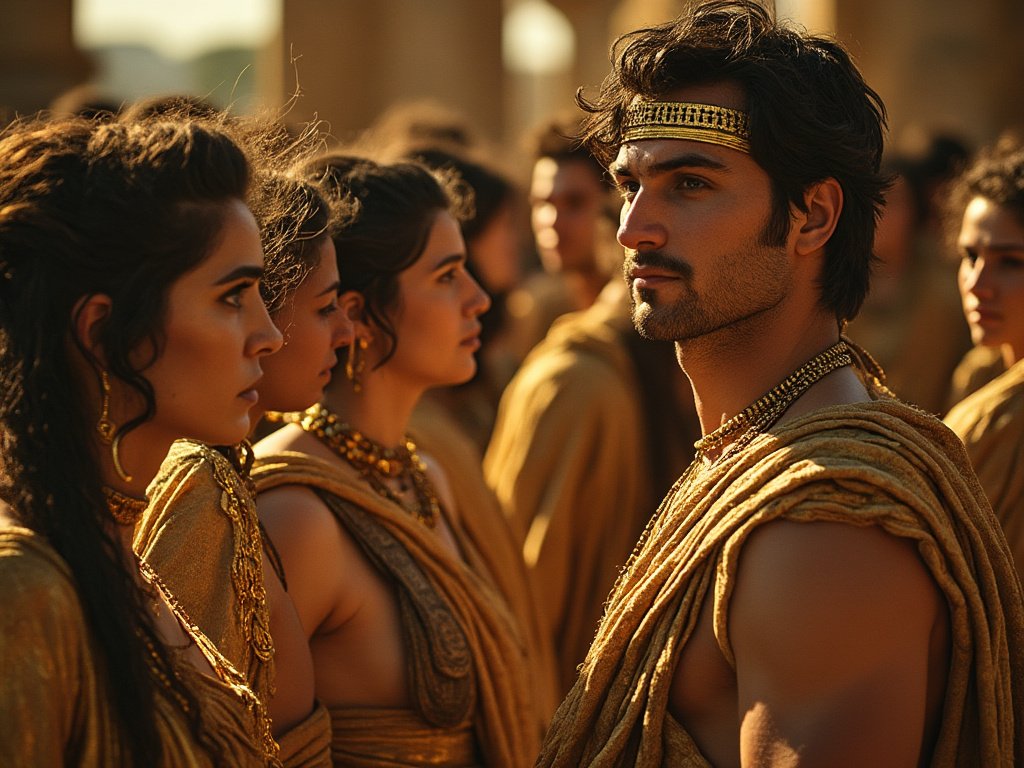
The Future of Mycenaean Studies
The study of Mycenaean fashion continues to evolve, with new discoveries and technological advancements shedding light on this ancient civilization. Future research promises to uncover more about the materials, techniques, and cultural significance of Mycenaean clothing.
Modern Techniques in Archaeology
Modern techniques such as dye analysis and digital reconstruction are revolutionizing our understanding of Mycenaean fashion. These methods allow researchers to identify the specific dyes and fabrics used, providing a more detailed picture of ancient textiles.
Ongoing Excavations
Ongoing excavations at Mycenaean sites continue to yield new artifacts and insights. These discoveries contribute to a growing body of knowledge about Mycenaean society and its sartorial practices.
Interdisciplinary Research
Interdisciplinary research, combining archaeology, anthropology, and textile studies, is essential for a comprehensive understanding of Mycenaean fashion. Collaborative efforts between experts in different fields enhance our knowledge and appreciation of this ancient culture.
Preserving Mycenaean Heritage
Preserving the heritage of the Mycenaean Age is crucial for understanding the roots of Western civilization. Efforts to protect and study Mycenaean artifacts ensure that future generations can learn from and appreciate this rich cultural legacy.
Conservation of Artifacts
The conservation of Mycenaean artifacts, including textiles and jewelry, is essential for their preservation. Techniques such as climate control and careful handling help protect these fragile items from degradation.
Public Engagement and Education
Public engagement and education are vital for raising awareness about Mycenaean heritage. Museums, exhibitions, and educational programs help disseminate knowledge and foster appreciation for this ancient civilization.
International Collaboration
International collaboration between researchers and institutions enhances the study and preservation of Mycenaean heritage. Sharing knowledge and resources helps protect and promote this invaluable cultural legacy.
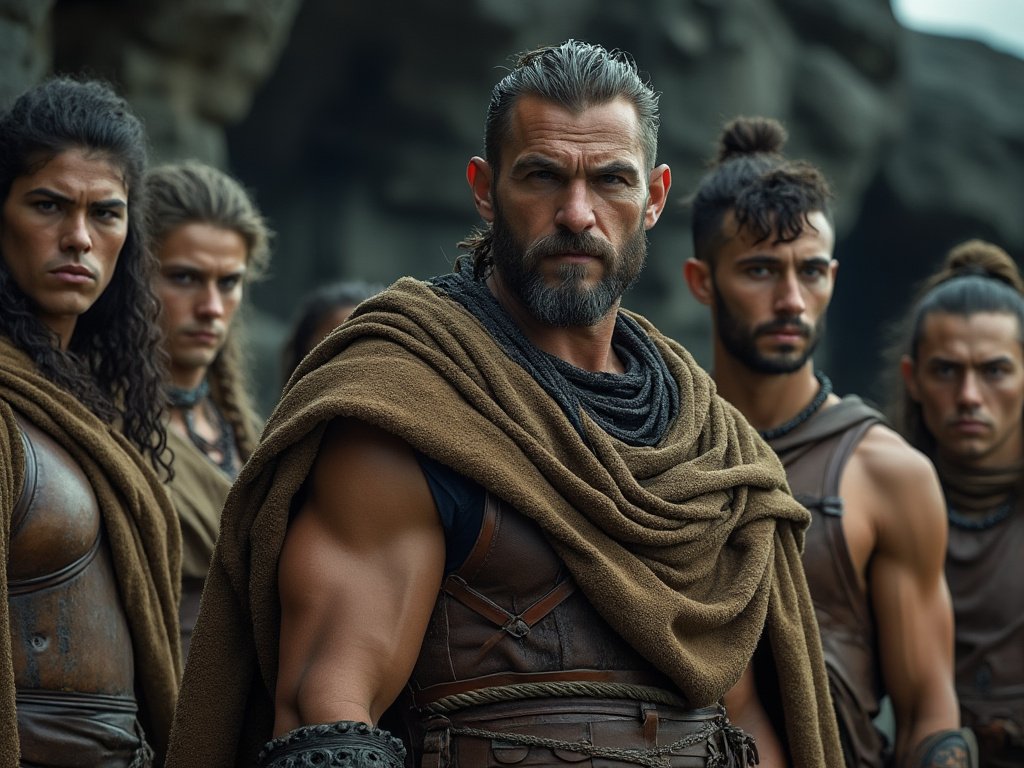
Summary Table
| Aspect of Mycenaean Fashion | Description | Cultural Significance |
|---|---|---|
| Blue Dye | Derived from indigo and woad plants | Associated with divinity and prestige |
| Gold Embellishments | Used in clothing and jewelry | Symbolized wealth and power |
| Earthy Tones | Created from natural dyes | Reflects agricultural roots and accessibility |
| Ceremonial Garments | Elaborate designs for rituals | Highlighted religious significance |
| Daily Attire | Functional tunics and kilts | Practical for everyday activities |
| Evolution Over Time | Increasing complexity and influence | Indicates societal changes and interactions |
| Preservation Efforts | Conservation and education | Ensures heritage is protected and understood |
Conclusion
The Mycenaean Age was a time of vibrant colors and intricate fashion, reflecting the sophistication and cultural richness of this ancient civilization. The use of blues, golds, and earthy tones in clothing and decoration was not only aesthetically pleasing but also carried deep symbolic meanings.
Through advanced techniques and materials, the Mycenaeans created a fashion legacy that influenced subsequent cultures and continues to fascinate modern researchers. Preserving and studying this heritage is crucial for understanding the foundations of Western civilization and appreciating the artistic achievements of the Mycenaean people.
Frequently Asked Questions
What were the primary colors used in Mycenaean fashion?
The primary colors used in Mycenaean fashion were blues, golds, and earthy tones. These colors were derived from natural dyes and held significant cultural and symbolic meanings.
How did the Mycenaeans create their vibrant dyes?
The Mycenaeans created their vibrant dyes from natural sources such as plants, minerals, and mollusks. Techniques included fermentation, oxidation, and careful temperature control to achieve the desired hues.
What role did gold play in Mycenaean fashion?
Gold played a significant role in Mycenaean fashion, both as a color and a material. It was used to embellish clothing, jewelry, and ceremonial items, symbolizing wealth, power, and divinity.
How did Mycenaean fashion influence later cultures?
Mycenaean fashion influenced later cultures through its use of color, decoration, and advanced techniques. The legacy of Mycenaean artistry can be seen in Greek and Roman clothing and decoration.
What types of clothing were common in Mycenaean society?
Common clothing in Mycenaean society included tunics, kilts, and long dresses. These garments were made from wool or linen and often dyed in vibrant colors or embellished with gold.
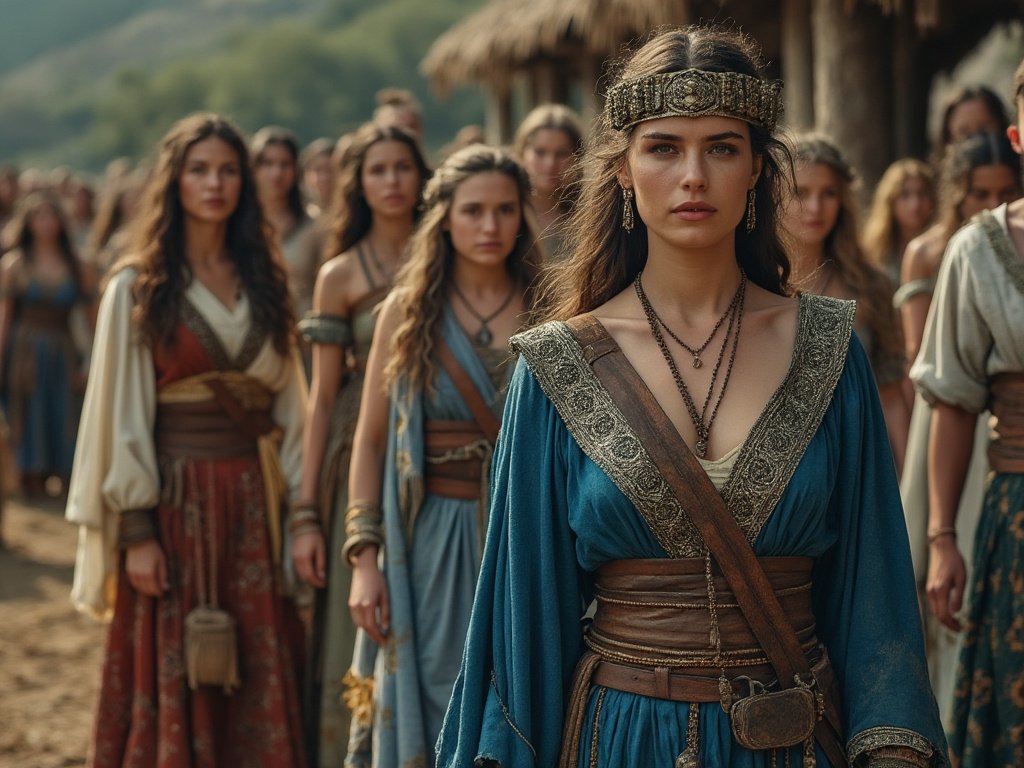
How do archaeologists study Mycenaean fashion?
Archaeologists study Mycenaean fashion through artifacts such as frescoes, pottery, and textile fragments. Modern techniques like dye analysis and digital reconstruction also provide valuable insights.
What efforts are being made to preserve Mycenaean artifacts?
Efforts to preserve Mycenaean artifacts include conservation techniques, public engagement, education, and international collaboration. These efforts help protect and promote Mycenaean heritage.
Why is the study of Mycenaean fashion important?
The study of Mycenaean fashion is important for understanding the cultural and artistic achievements of this ancient civilization. It provides insights into their social structure, economic systems, and interactions with other cultures.

Brenda Tillman is a color maestro who brings artistic brilliance to every piece she crafts. Passionate about imaginative expressions, she illuminates the world of fashion with her expert guidance on shades and combinations. Beyond her writings, Brenda is a culinary enthusiast and a global traveler, infusing her work with diverse insights. Her unique touch transforms simple color choices into art.
Reviewed By: Joanna Perez and Anna West
Edited By: Lenny Terra
Fact Checked By: Matthew Mansour
Photos Taken or Curated By: Matthew Mansour

